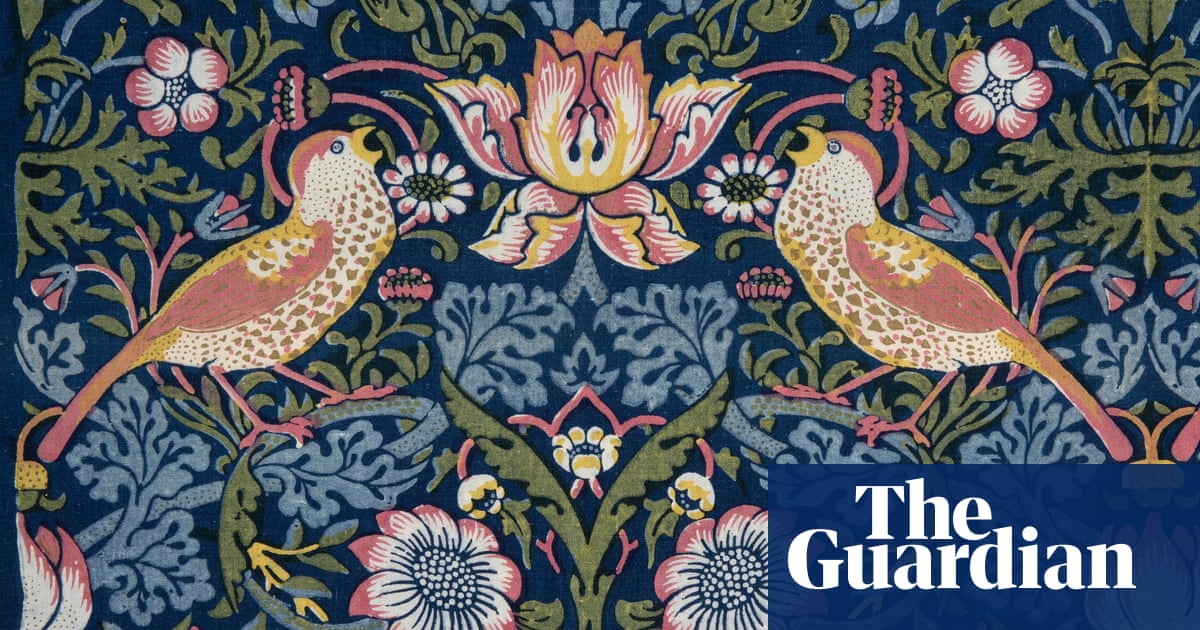William Morris famously implored us to avoid filling our homes with items that “you do not know to be useful or believe to be beautiful”. But now the William Morris Gallery – housed in the 19th-century writer and artist’s former home – is appealing to the public to send them all manner of artefacts adorned with his distinctive designs for a major new exhibition.
Morris’s patterns are having something of a moment. “You walk down the high street and if you get your eye in you can see Morris patterns everywhere: iPhone cases, umbrellas, shopping trolleys,” said Hadrian Garrard, the director of the gallery in Walthamstow, east London.
He wants hundreds of “weird and wonderful” items to fill the Morris Mania exhibition, in order to create an “immersive Morris environment”.
The exhibition will be at the centre of the gallery’s 75th anniversary celebrations and will open in April 2025. “We’re exploring how Britain’s greatest designer went viral – it’s Morris everywhere, Morris on everything,” Garrard said.
Morris is best known for textile designs that took inspiration from nature, but he is also known for his socialism and belief that good design can improve people’s lives. He is widely regarded as the father of the Arts and Crafts movement.
The recent popularity of his designs is at the heart of a paradox the show will explore, according to Garrard. Morris was famous for his defence of workers’ rights, belief that good design should be for everyone and “utopian plans to cut working hours”, but those ideals could sometimes be in opposition.
Garrard said: “He wanted his designs to be affordable but in his lifetime they were too expensive; they were for the upper middle classes because he wanted things to be made well.
“But we now see it democratised to the point where you can buy an iPhone case for £5.99 or a pair of trainers, but the way those things are made is really complicated because we’re talking about globalised economy, mass production and poor working conditions. The show – in a fun way – is looking at the paradox and wondering how we got there.”
Alongside the public donations, which Garrard said would either be returned to the owners or be given to local charity shops in the Waltham Forest area after the exhibition closed, the gallery has also been collecting assorted “oddities”.
“We’ve just bought a Japanese waving cat, we’ve also got a sari that’s been made by a company in Delhi, we’ve got a seat from British nuclear submarine fleet – they used to deck the subs out in Morris print,” said Garrard. “There’s a photograph of the Winter Palace in 1917 after it’s been smashed up by the Bolsheviks and in the background is the William Morris tulip wallpaper.
“He famously said ‘have nothing in your house that you do not believe to be beautiful or useful’ and there are many funny things that is written on: a tape measure, weird chopping boards, a bottle opener. As well as the patterns, we’re collecting those oddities as well.”
Designs by Morris, who died in 1896 and ideas have arguably never been more in fashion. Artists such as Kehinde Wiley have spoken about his influence, while the Guardian argued in 2022 that “his socialism and care for the environment are as urgent now as they were in the late 19th century”.
The William Morris Gallery is undergoing refurbishment, following in the footsteps of Morris’s former home in Oxfordshire, which was transformed by a £6m renovation project and reopened to the public in 2022.
Morris said the home, located in the Oxfordshire village of Kelmscott was “heaven on Earth” and some of his best-loved designs drew on the flora and fauna found there.









